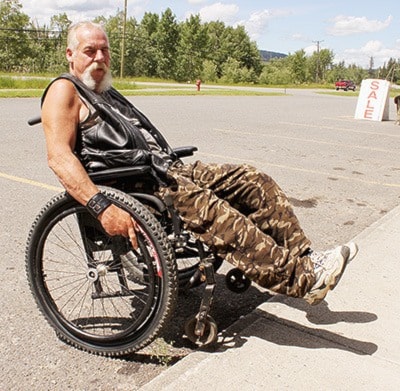Premier Christy Clark has released an accessibility strategy based on the input of thousands of British Columbians who participated in a three-month public consultation.
Accessibility 2024 is a 10-year plan she says is intended to make B.C. "the most progressive place in Canada" for people with disabilities.
Boundary-Similkameen MLA Linda Larson has also been appointed as parliamentary secretary for accessibility to the Minister of Social Development and Social Innovation.
Mel Torgerson cares for seniors in his role as manager at Carefree Manor assisted living facility for seniors in 100 Mile House. He also sat on the Measuring up the North (MUTN) committee that studied accessibility and inclusivity a few years back.
The committee worked with local politicians, residents and seniors, as well as provincial disability societies, he says, adding folks went to Winnipeg to see what was done there, and the committee consulted with experts from the United States.
"What disturbs me is [government is] unveiling it as a totally new idea – when there has been study after study after study."
At that time, the former District council explains, communities from 100 Mile House to throughout northern B.C. were involved in the MUTN studies.
"There were all kinds of stuff that went on for years. It's like [the provincial government] put it in the closet. Did they not take notice of any of those studies that were being done?
"It sounds like they are reinventing the wheel ... like everything we've done before is for naught."
100 Mile House resident Kelly De La Mare gets around in a wheelchair, but says he experiences difficulties, despite his having more upper body strength than many seniors and people with disabilities.
He is generally pleased the provincial government intends to take some steps, but notes actions now at the community level could help many people.
Accessibility 2024 is designed around 12 building blocks to reflect themes emerging from the public consultation.
The Inclusive Communities block looks at how people with disabilities live their daily lives at the local community level in B.C., and about how local governments and the province can work together to make community amenities more accessible.
De La Mare notes he pointed out a prime example of this problem to local government four years ago.
"One of the hardest buildings to get into in 100 Mile House is the District office."
At that time, he was taking a spin around town with Mayor Mitch Campsall, who was "test-driving" a wheelchair route over the sidewalks.
The District's door is still too heavy to manoeuvre through in a wheelchair and the sidewalks in the downtown core continue to crumble and have some steep slopes, he explains.
"I went through everything in the downtown [with Campsall]. And you know how much has been done? Nothing – nada."
The Inclusive Government block focuses on how the structure of government includes and affects the daily life of people with disabilities.
While he's tried this route unsuccessfully in 100 Mile House, De La Mare adds he knows the path to improved accessibility lies in the hands of government to a great degree.
"The only way would be through an advocate, or approaching your city council, MP for the area or MLA. What other options have you got?"
Other building blocks range from "relatively satisfactory" (services, accessible environment), to "pretty good here" (employment, health transportation) to "very good" (emergency preparedness), he says.
The Consumer Experience block focuses on how the private sector provides goods and services to people with disabilities who live and travel to B.C.
De La Mare explains the "substantial" fuel rebate for those, like him, who do drive with disabilities, should be publicized more, and government should promote public awareness initiatives for the general public perception.
"If folks could just look at the people in a wheelchair, don't look at the wheelchair, with a person in it."
More details on the study and the plan can be downloaded online at www.newsroom.gov.bc.ca/downloads/Accessibility_Summit.pdf.
Nearly 550,000 people are living with a disability in B.C. today.
